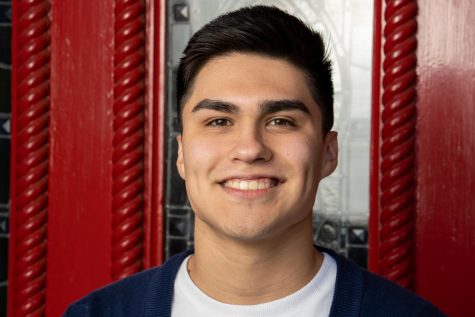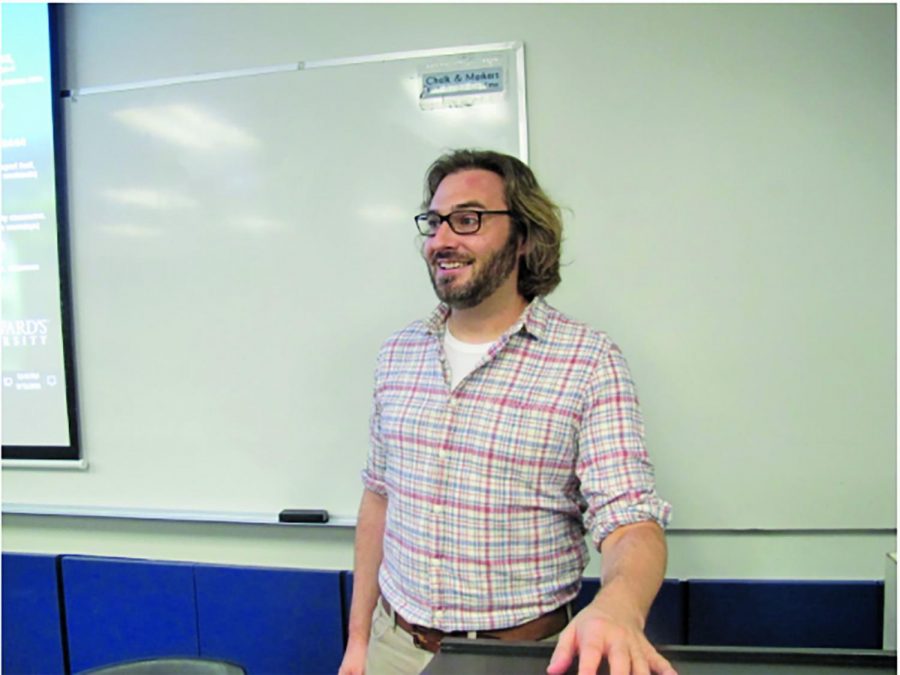Professor poses challenge to “open up” classroom discussion
Tim Appigani encourages students to have challenging discussions.
Communication professor Tim Appignani says that he encourages students to challenge what’s accepted and thinks having contentious conversations in class serve as a primary way for students to become more aware of the outside world; considering many other professors might not feel the need to discuss matters like gender roles and racial portrayals in media.
“Everyone has some experience that they can bring to the conversation and that’s what makes it really meaningful in the classroom. I think that any teacher who thinks that students aren’t aware of [social issues] and aren’t thinking about this is kidding themselves,” Appignani said. “If we pretend that it doesn’t exist, then it’s almost like pretending that their life isn’t happening.”
Appignani was quick to criticize a glaring issue he sees about the campus and how it consistently affects the overall college experience of students.
“One thing I would like is for the school to embrace diversity in the way that it says it will.”
As a minority, I’ve personally felt out of place during my time at St. Edward’s. Though majority of the school is made up of a Latinx community, I’ve struggled with finding a sense of acceptance in the “diverse” environment that was heavily advertised.
To further his critique, Appignani explains that people of different races and ethnicities commonly have trouble relating to other groups as the university sometimes fails to address the diversity it so often markets.
“Ethnicity and national origin are deeper things,” Appignani said. “For instance, we had a student who’s from Africa who says, ‘the African-American kids don’t talk to me. And yet, other people assume that I can relate to them when I don’t even know them.’ … I think part of that requires the university to talk to the students about this and listen to what they have to say.”
Personally speaking, the Latinx community, in general, is so layered that it isn’t easy to just be thrown in there and expected to fit in. More professors, like Appignani, should be employed on campus because he has allowed many to see what learning environments would be most effective for people of color.
Though most of his students would agree that the material is stimulating as it offers a new way of looking at things, Appignani says that he has received his fair share of students who simply won’t consider others’ people’s values.
“Students are not always ready to engage the conversation in the most respectful way. … It creates a situation where we’re not going to have any meaningful talk about a topic, instead, we’re just going to have an argument. There’s no topic I try to avoid, just the way that the topic is discussed.”
Appignani concludes his ideas with a challenge for other professors who are avoiding conversation about subject matter that is crucial for young minds to inhabit.
“It’s important for us to open up the discussion. We’re teachers who are experienced and mature enough to guide that conversation so it’s not an argument and not a fight. It’s a discussion.”

Hey! My name is Adrian and I am the sports editor for Hilltop Views. I am a senior Writing & Rhetoric major with a concentration in Journalism &...







